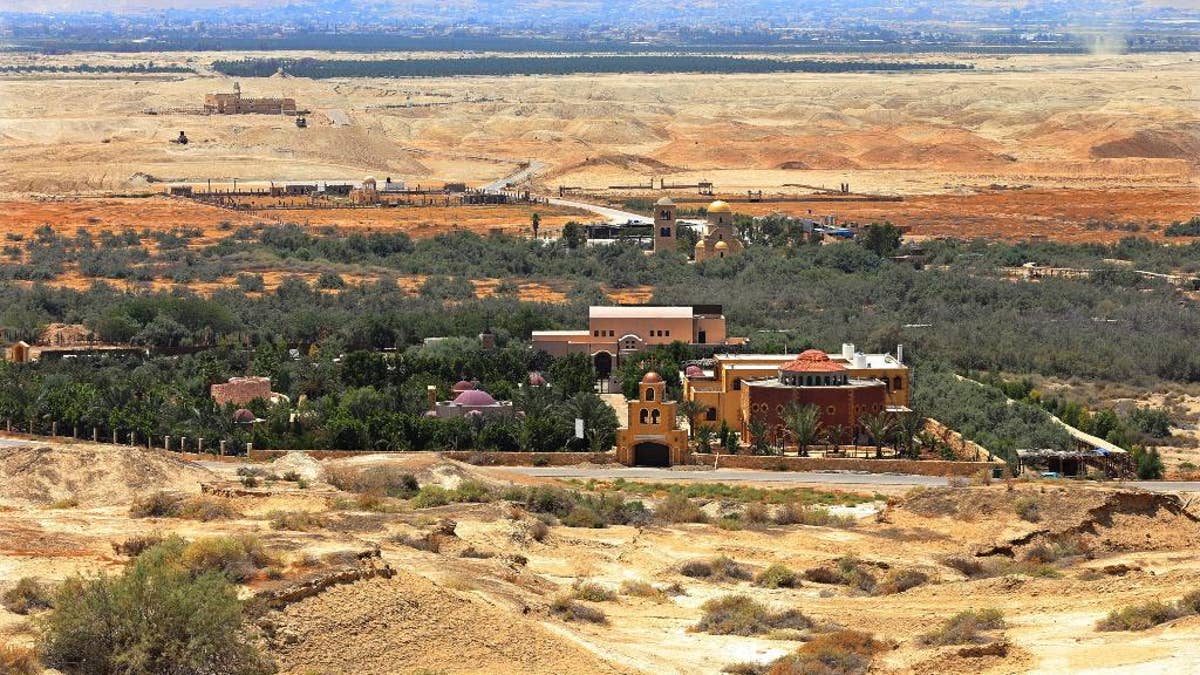
This July 6, 2015 photo shows the baptismal area on the eastern bank of the Jordan River in South Shuna, Jordan, foreground, and the baptismal area of the Israeli-run site known as Qasr al-Yahud, with the golden dome church, background, located in a part of the West Bank. UNESCO recently designated Jordan's baptismal area a World Heritage site, over the Israeli-run site of Qasr al-Yahud in the West Bank, which is one of three territories captured by Israel in the 1967 Mideast war. (AP Photo/Raad Adayleh) (The Associated Press)
Father Baret Yerezian recalls a time when he didn’t have to walk through a minefield to pray at the traditional site of the baptism of Jesus.
“We would take people, put a small boat in the river and bless them right there in the middle,” said 69-year-old Mr. Yerezian, the director of real estate at the Armenian Patriarchate in Jerusalem. “It was easier then.”
Such free access to the site where St. John the Baptist is said to have baptized Jesus more than 2,000 years ago has been rare in the 50 years since Mr. Yerezian was a teenage clergyman.
Israel wrested control of this West Bank area, known as Qasr al-Yahud, from Jordan in the 1967 war. It then mined the entire site on the banks of the Jordan River to ward off attacks from across the border. But Israel signed a peace treaty with Jordan in 1994 and their border has been relatively quiet for more than 20 years.
Israel cleared a part of the baptismal site in 2011 and it has since become a popular attraction for visiting Christian pilgrims. Now Israeli and Palestinian officials have agreed to allow U.S. and U.K.-based demining group HALO Trust to clear the rest of the site—about 136 acres. HALO and Israeli defense officials estimate the area is littered with more than 3,000 antipersonnel and antitank mines and an unknown number of improvised explosive devices. The plan is to clear all the mines within two years.
To reach their watery destination, pilgrims must pass through a ghost town of churches fenced off by menacing signs that read “Danger! Mines!” On a recent morning, 150 Ethiopian Christians clad in white robes adorned with depictions of Jesus’ baptism waded into the river for a ceremony. The atmosphere was festive as they banged drums, sang in Amharic and splashed in the murky brown waters.
On a wooden platform above the stream, Russian Orthodox Christians waited their turn under the shadow of palm trees. Nearby, a clergyman led another group of Chinese Christians in prayer. A few hundred yards away, an eerie quiet surrounded the old buildings covered by a tangle of thorny bushes, shrubbery and barbed wire.
Abandoned for nearly 50 years, the worn, sandy exterior of an Ethiopian Orthodox church matched the desert landscape. The ground on a Russian plot cracked in the sun. Through a gaping hole in the side of a Romanian church, light shone through a mural of an angel.
All told, eight Christian denominations will get access to land, five churches and monasteries, and a few outhouses that have lain dormant for almost five decades. More than 300,000 tourists already visit the site each year; officials say they expect that the mine clearance will only boost those numbers, something that could lead to further development in the area.
